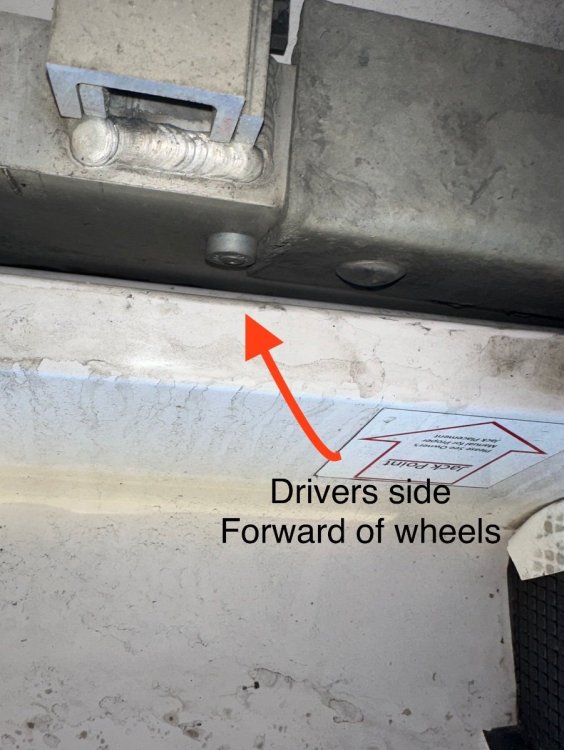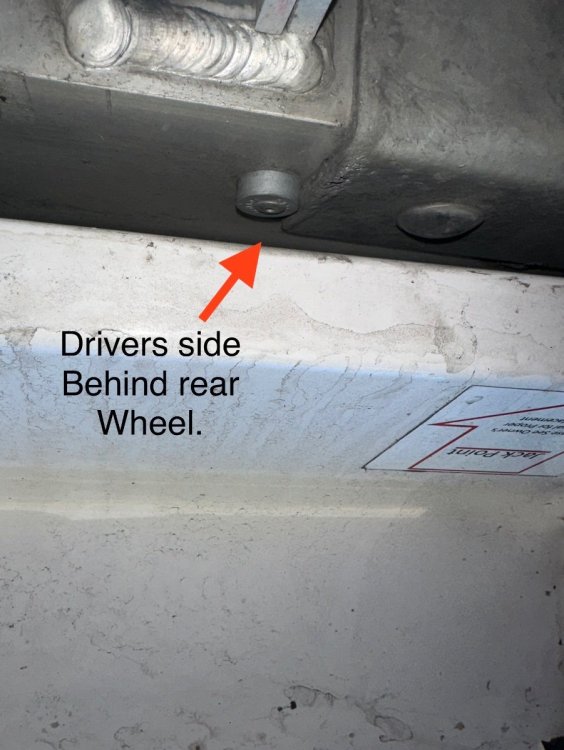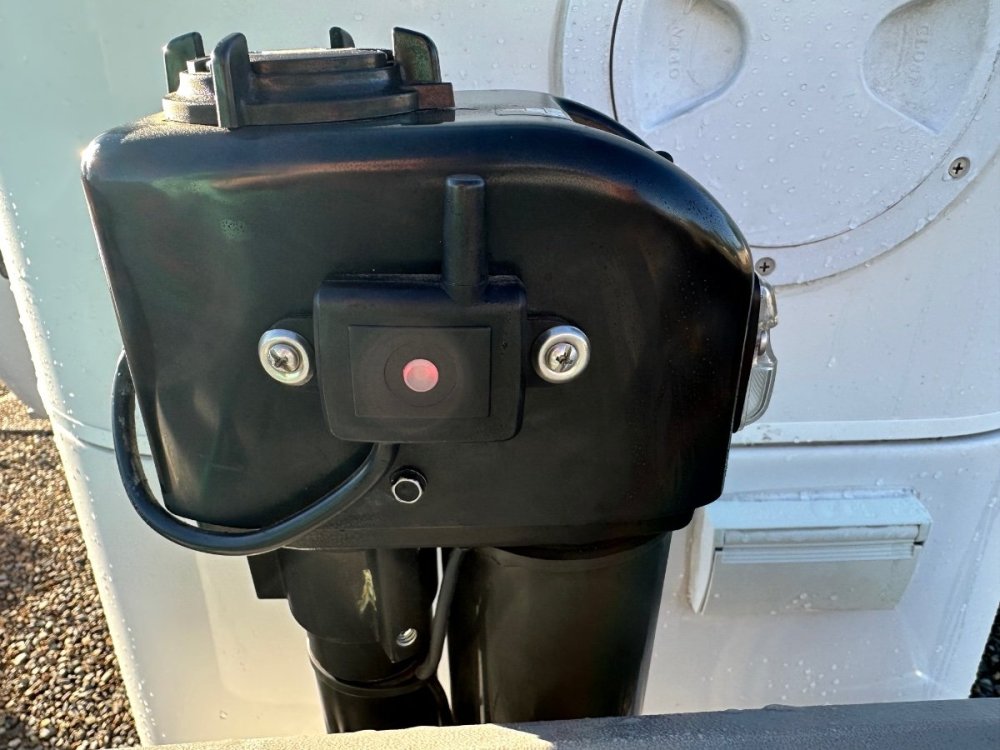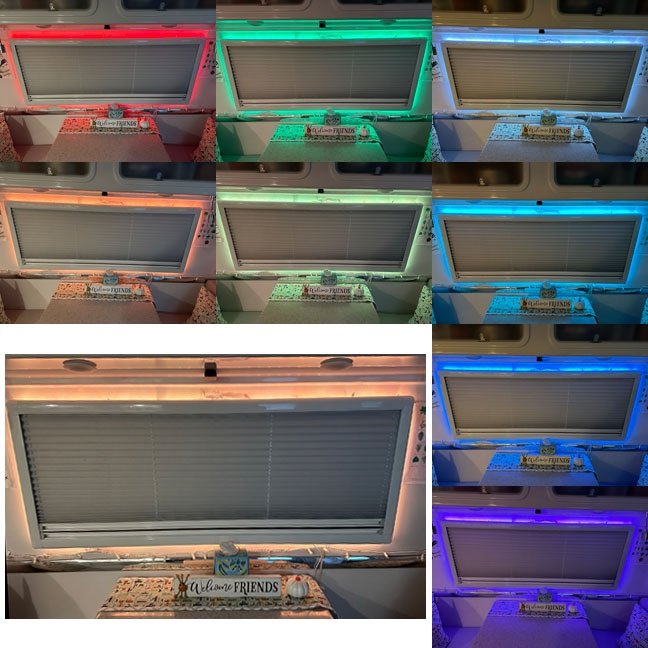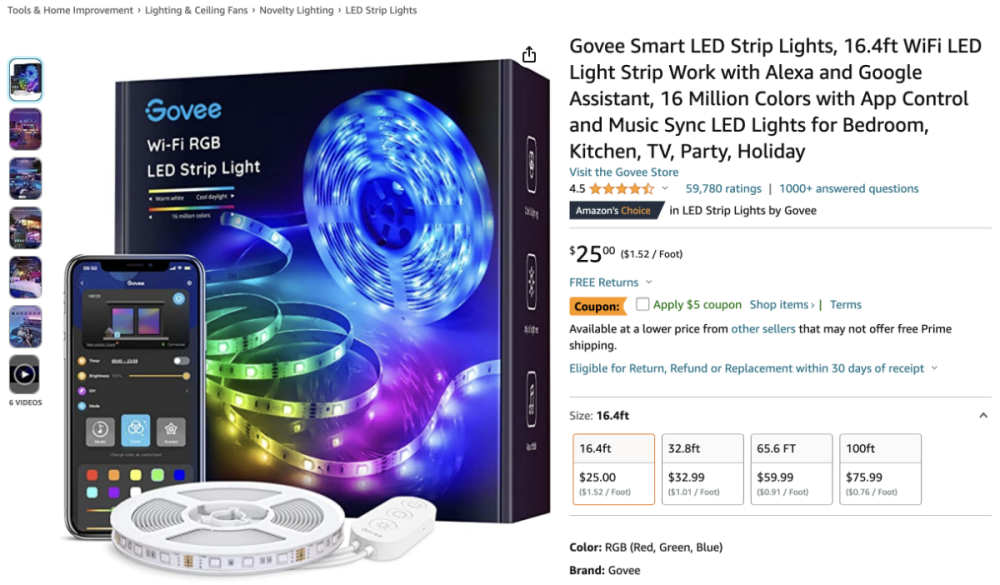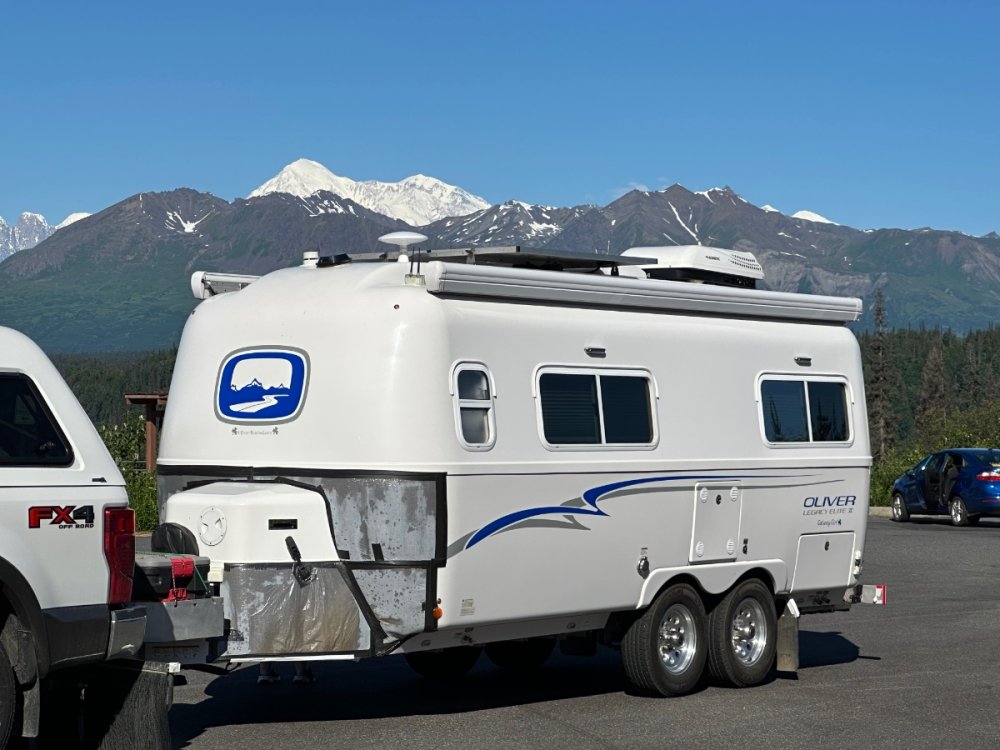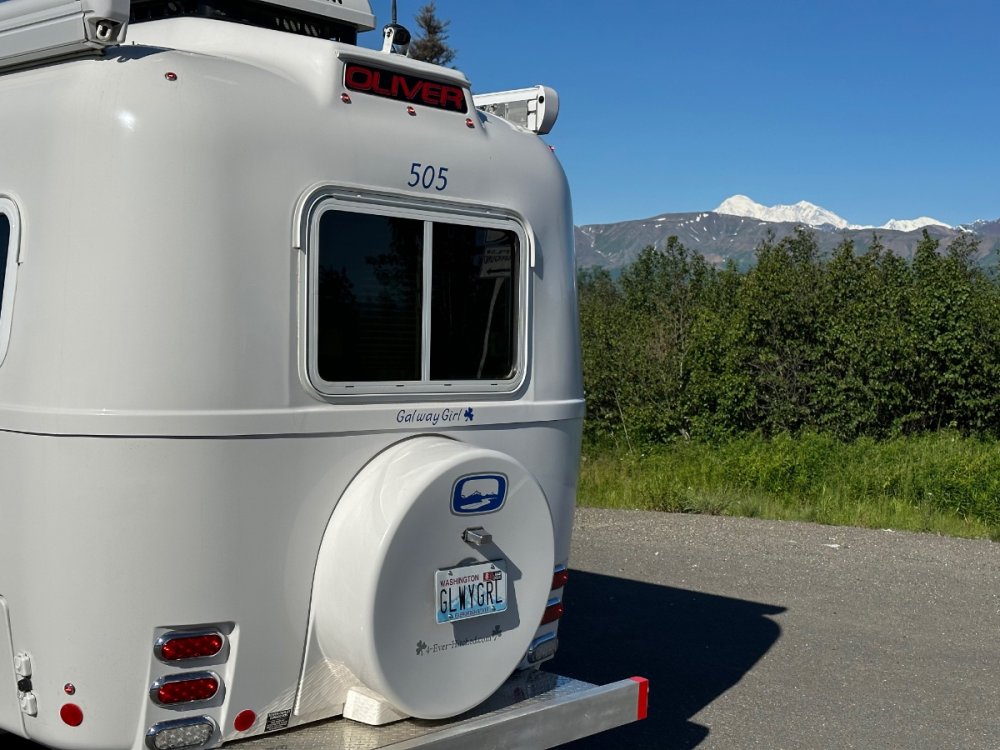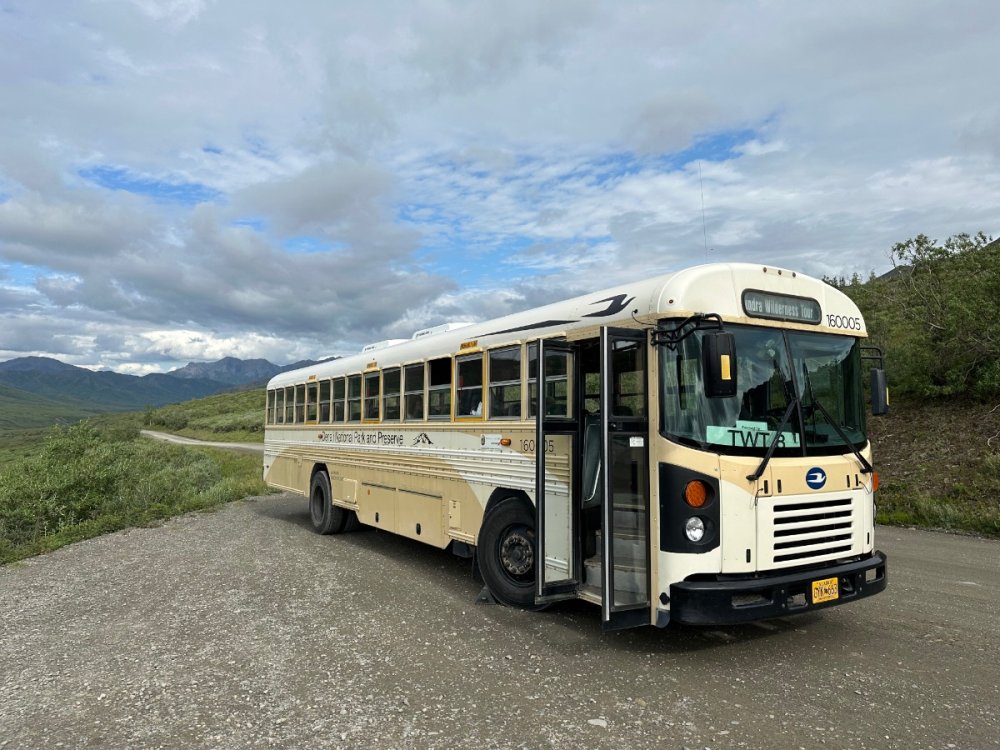-
Posts
676 -
Joined
-
Last visited
-
Days Won
20
Everything posted by Galway Girl
-

Dometic Toilet -broken flush mechanism
Galway Girl replied to Galway Girl's topic in General Discussion
Here’s the part that broke on our Dometic 311 toilet, and the repair process. Foot Flush lever - broken center shaft. No Dometic repairable parts. Note, we could still manually reach down and flush the toilet as temporary work around. 10 steps in the repair 1) ordered a new Dometic model 311 toilet with slow close heavy duty lid. Opened and inspected new fixture to assure all parts are there and no damage. Dometic Model: 311 Mfg#: 302311681 Amazon $261.00 Note: It comes with new seal already installed on bottom of toilet and new T bolts, nuts and plastic covers. 2) Turn off water valve behind toilet & flush toilet and inspect no water in bowl or clinging items down drain. Remove water supply line on bottom/back of toilet. 3) pop off plastic caps from mounting bolts on both sides of the toilet with flat blade screw driver. 4) use 7/16 wrench to remove the 2 toilet mounting bolts. 5) pull toilet straight up then pivot back out of bathroom. 6) on the mounting ring, remove existing t slot bolts and clean mounting ring and seal mating surface. If mounting flange has no cracks or breaks, then continue. (If you have cracks you can buy a steel toilet flange repair ring that mounts on top of the existing plastic body.) 7) insert new T slot bolts into flange so they are parallel to the front of the shower pan. ( 3 and 9 o’clock) 😎 Lower new toilet down over mounting bolts. The toilet will not be fully down on surface until you tighten the bolts. 9) use 7/16” wrench to tighten bolts alternating from one side then the other to compress the seal. Don’t over tighten either side, just slowly tighten until the toilet is flush with floor all around the base. 10) hook up water and test flush checking for any leaks around toilet base or water lines. This took me 30 minutes. The RV Park in Moab we were at let me ditch the old toilet in the shipping box in their dumpster. We are back to foot flushing. As an added benefit, our new toilet has a very substantial slow close lid. -
Welcome from Everett Wa Hull 505
-
Stepped on our Dometic 311 flush valve and it popped off. Upon inspection the flush mechanism can be worked by hand (eew) but it sheared the center pivot shaft. Dometic said…no part for that…so I have a new toilet on order to be delivered to our RV park while we are in Moab this week. I’ll paste in pix of the repair later on this thread. Anyone else had that flush (step on) mechanism shear off?
-
Be careful if a shutdown happens it can close National Parks Oct 1. We are heading to mighty 5 in Utah soon and the Utah Governor stated yesterday that Utah plans to keep their NP’s open by paying the operating costs from Utahs budget. 90% of Utahs campgrounds are Federal Parks and many communities rely on camping public to survive.
-

Lukewarm Water
Galway Girl replied to Mark Penton's topic in Welcome To The Oliver Travel Trailer Forums
Ditto: We had a call to Truma at one point and their first question was if we had an outside shower. Same issue fixed Truma as well. Hot and cold shower valves must be off or hot and cold water mix and the heater will run and only produce lukewarm water. -
Lee, I just sent you an email. we’re in Colorado now moving to Utah for the mighty 5 next week. Maybe we could sync up. Craig Short Hull 505
-

No 120 vac from outlets in Elite II.
Galway Girl replied to docron's topic in Mechanical & Technical Tips
You either have a 2000 watt or 3000watt inverter. The wiring diagrams are different. Which do you have? The microwave may be on a separate circuit from the other outlets which share one common gfci outlet. I concur that gfci plugs could fail, or a loose ground. -
-
-
I’ve added the sensors I use to the list here: Oliver Outfitters Guide on Amazon They can be attached in various places using a zip tie in the corner hole. I’ll be adding one outside near my propatanks next.
-
I’ve been camping in the Rockies this week and took some temperature readings with the furnace running. I’m wondering if 100F temps near the furnace are normal? I’ve checked the furnace piping/runs and no leaks or broken lines. Here’s the data below: I have 3 sensors - 1) Next to the thermostat on side of pantry 2) Under curbside bed near the water pump 3) Under street side bed near stabilizer jack pole. When I changed the thermostat from 60F night setting to 65F at 6:15am, I noticed the temps near the pump climbed above 100F (red traces). I think this is normal but thought I would check with others who have sensors. Craig Hull 505
-

Suspension Rust on 2017 Oliver - a problem or not?
Galway Girl replied to Cort's topic in General Discussion
New units all now have zerks inward facing upon request. They could have been swapped at a factory visit if requested...or by the owner to make it easier. -

Fun Lights for Decoration - On Back of Dinette Window
Galway Girl replied to Galway Girl's topic in Ollie Modifications
The unit has dozens of animation effects, like "River", "Campfire", and Holiday Presets. Some solid colors shown below: Short video of "Music" light function to see various colors. IMG_3466.mov -
My wife and I had a discussion a while back about upcoming travel that will take us across seasons and holidays. She asked that I figure out a way to have seasonal lights in the dinette window that can be changed with the season or holiday. Our original solution was just a simple set of white lights that we plugged in below the dinette window. I've found a solution that's made her very happy and add's color and both manual and bluetooth control. Here's the we've been using. (See Link near bottom of this article for Amazon item.) The strip of LED lights are controlled either by the switches in the cord or via the bluetooth connected phone app. The flat ribbon is a perfect fit on the back side of the Oliver window frames, and don't interfere with attaching or detaching the window frames. I would suggest getting the phone app, and then testing the light string before installation. Once you see that the lights are working then prep for the install by unplugging the controls from the light string. Installation on the rear of the Oliver Window Frame Remove window frame - Tug across the top of the window frame detaching the 3 clips that hold the window frame to the wall. Do the same across the bottom of the frame. Lay the window face down on the dinette table so back is facing up and clean the flat surfaces on the back edges of the frame with alcohol. Align the connector for the ribbon so that the connector from controller can reach to the AC power outlet just below the dinette. We attached the light controller button to the bathroom side of the dinette table next to the wall. Peel and stick down the light ribbon completely around the frame ( Note: take care at corners to gently fold the ribbon back on itself while avoiding having the LED's right on the corner bend.) As you finish sticking down the strip, cut the ribbon light at the closest "cut joint" to the starting end. (there may be 1-2 inch gap or slight overlap. Plug in and test lights while the unit is still on the table...once it's working move on. Re-attach the frame to the window by aligning the top 3 tabs and tapping the frame in place, then repeat on the bottom 3 tabs. Plug in the unit and have fun choosing different colors per season or holiday. I've added the item to our on Amazon for those interested. Craig & Rose Hull 505 - Galway Girl
-
Just passing along: Heard back from Rodney Lomax, Sales Manager at factory about a few minor changes to 2024 model year: No big changes as many happened last year. 1) Delete both street side water ports from side of trailer Simplify down to just 2 ports for water. ( These side mounted ports get lots of grime and road abuse. Moving to rear should help.) 2) Move current street side fresh tank fill to left side of rear bumper. (Like the current boondocking port on right (curb) side.) 3) Change right rear boondocking port valves so it is both the regular pressurized input line….and a boondocking port. (In 2024 Only 2 ports for water on rear of trailer) 4) Rework body moulds to remove the inset used for upper fridge vent. New fridges don’t need that vent. The trailer will then be streamlined all the way to the door on the upper hull. 5) The exterior solar port will no longer be standard but will be a dealer option for customers that wish to have it. (Note: Several owners added their own solar ports in the past.) 6) There is a possibility of a bathroom door change but that is still in the R & D phase and may not pan out.
- 90 replies
-
- 18
-

-

-

Fix for Broken Flush Line?
Galway Girl replied to Galway Girl's topic in Mechanical & Technical Tips
After digging into the "leaking / broken flush line" issue...I found that the problem was not the air trap under the sink area, nor was it any of the hoses leading to/from the air trap. FYI - The air trap valve (above pix) is held in place on the front side of the sink cubby. Oliver uses screw head zip ties and that's then attached onto a piece of core board that was epoxied to the inside of the sink. Since the sink was open, I labeled the lines to/from the Air Trap valve and then moved on to find the real problem leak. The broken part was actually the flush inlet port on street side of the trailer. To test this I capped off the flush input line at the point it would normally enter the anti siphon valve. (1/2" NPT Male Cap). Next I had my wife turn on the water, and looked at the street side port under the dinette seat by the bathroom. When she turned it on , water was gushing around the connection. I recall that flush port got tweaked once as I had tripped over the hose while it was connected to that port. The port was pretty loose...and likely the copper to brass connection inside had cracked and finally let go. I've replaced the external port with this new San-T-Flush port, and all is fixed and no more leaks. To mount this port, Oliver uses butyl tape on the back side to make a flat surface, then two screws into the body of the trailer. (I'm planning to fabricate a backing plate and change from screws to bolts on the next repair if needed.) Now my last step will be to re-caulk the bathroom storage cubby on the front of the sink. CS -
Made it home from the Alaska trip. The yoga mat's worked really well keeping away rock chips. (Thanks for the ideas from previous owners). The 3M no-residue tape was also a godsend...it peeled off without any issues. We saw 3 other Oliver's out on this trip. All of them had some type of front covering. One person used very flexible linoleum flooring they picked up in Whitehorse YT. Dirty trailer and beat up yoga mats upon arrival home: After stripping off yoga mats and a quick wash:
-

Fix for Broken Flush Line?
Galway Girl replied to Galway Girl's topic in Mechanical & Technical Tips
Thanks…after service contacted me they said the new design has hose come in from side port, then all the way up under the sink to a valve. If you have the flush system where the lines run around the front of the tank then it has a vacuum break under the bathroom sink. That is where it is most likely leaking. You would need to remove the bath vanity insert (4 screws & caulk). The system runs up to that break which keeps any tank water from flowing to the inlet. The hose continues as a loop back from the front of the tank back to the flush input as you’ve shown. Vacuum break valve located under sink now used on newer trailers. I’ll tear into this when I get home. took this out our rear windo this am at Meziadin lake PP BC We had been sitting out there the night before! -
I was dumping and flushing tanks today and noticed water coming out of the scupper in front of the flush port. I turned off the flush line and the water stopped. I finished my dump by passing a hose inside and filling the toilet from the top. upon inspection I found that the flush port line running forward to the black tank is floppy loose, and I assume snapped or popped off from the harsh roads in the Yukon/Alaska. It’s loose way up front where I don’t have access. Anyone know where the black tank flush lines run, how they are accessed for repair? I’ve turned in a ticket but assume a field repair isn’t possible. Craig - Hull 505
-
Roads between Destruction Bay YT and Tok AK are under construction. Gravel stretches aren’t bad as they are graded. worst are long vertical ruts that catch steering Tires. Need to slow down and plan for a longer drive day. just did the 6 hour Kenai Fiords NP cruise. Well worth the prices. We saw over 20 humpbacks. One pod of 12 we’re doing bubble feeding where two whales chase the herring into a ball, then three other whales blow bubbles to surround the prey, and then whales come straight up through the bubble pen from the bottom with their mouths wide open , gobbling up everything in their path.
-
Cameras in use are iPhone 14pro and Fuji XH2. Front covered using yoga mats and 3m no residue tape (from Amazon) works great to keep rocks from chipping front.
-
-
-
-
Got a note back from service stating that they started scoring back of block in the 2021 production to improve adhesion. My block was an older stock 2020 version smooth on both sides.








